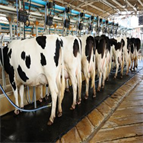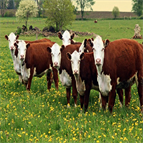Find methods for your needs
Refine by Feature
Displaying 1-4 of 4 results for Tag: Food residue analysis
Simple and Rapid Analysis of Chloramphenicol in Milk by LC-MS/MS
Instrument Type: LCMSMSChloramphenicol (CAP) is a broad-spectrum antibiotic with historical veterinary uses in all major food-producing animals. It has serious side effects on humans that may cause aplastic anemia, and suspected carcinogen effect. Though banned for use in all food-producing animals by the EU, USA and Canada, residues of CAP at unacceptable levels continue to be found in food imports. We describe a simple sample preparation procedure followed by a high-speed LC separation and detection by a triple quadrupole MS operated in SRM mode and validation per European Commission Decision 2002/657/EC.
Detection of Six Zeranol Residues in Animal-derived Food by HPLC-MS/MS
Instrument Type: LCMSMSZeranol is a non-steroidal estrogenic growth stimulator that is widely used in food-producing animals in many countries. A synthetic derivative of the mycotoxin zearalenone, zeranol is a potential endocrine disrupter that may have adverse effects on humans (birth defects and reproductive disorders) because of its hormone-like properties. The use of zeranol in the livestock industry may also cause secondary pollution and environmental contamination of drinking water and foods. We describe an effective LC-MS/MS method to detect six zeranol residues in animal-derived foods.
Study of β-agonist Residues in Animal-derived Foods by LC-MS/MS
Instrument Type: LCMSMSWe developed a sensitive and reproducible LC-MS/MS method to detect ten β-agonists drugs in animal-derived foods.
Detection of Glucocorticoid Residues in Animal-derived Food by HPLC-MS/MS
Instrument Type: LCMSMSWe developed an effective LC-MS/MS method to detect eight gluococorticoid residues in the liver and muscles of pig, cattle, and lamb, as well as in chicken, eggs and milk.




